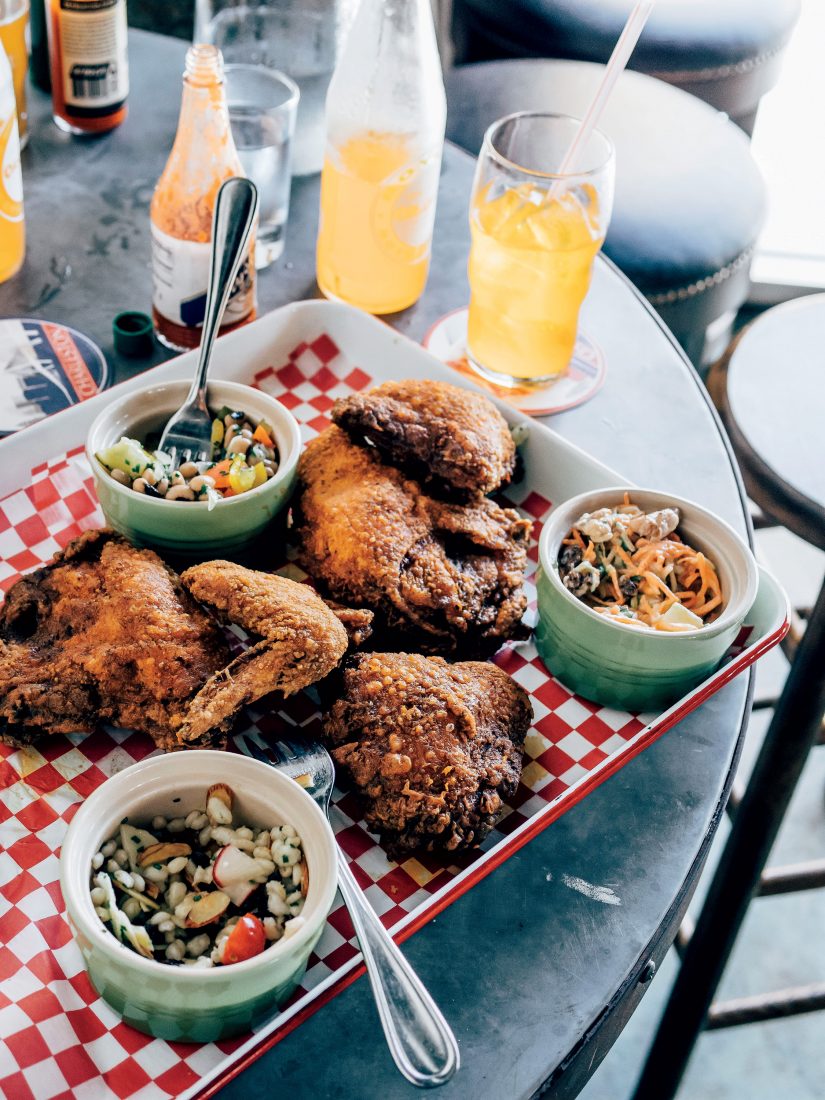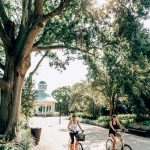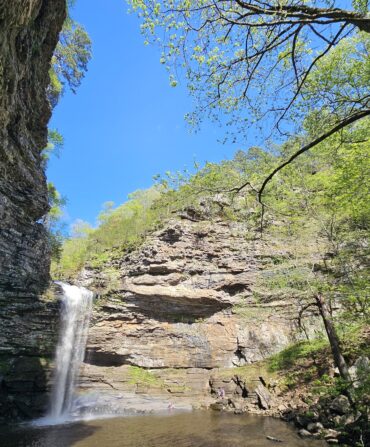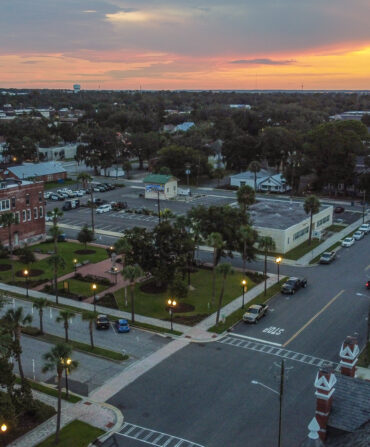We love talking to folks who recently moved to Charleston, most likely because we remember—viscerally—being newcomers ourselves to the Holy City. In August 1979, our parents moved from bleak, post–Son of Sam Manhattan into a tall yellow townhouse on Rainbow Row, in predominantly residential South of Broad. That neighborhood encompasses the southern tip of the peninsula, where the Ashley River meets the Cooper River in Charleston Harbor. We were eight and ten, awed and overwhelmed trying to make sense of this world of old houses and horse-drawn carriages, where a street vendor pushing a perambulator-style stroller sold wet paper bags of peanuts that had been boiled in salt water. Now we’re especially solicitous of recent arrivals—reaching out to them, finding out what they’re interested in, sending them on paths of inquiry we hope will prove this place to be even richer in story and culture than they ever imagined.
Recently we spoke with a woman who, just weeks earlier, had moved with her husband into a new apartment complex in one of the clutch of booming neighborhoods that orbit Upper King Street. One of the city’s main thoroughfares up and down the peninsula, King Street is divided into upper and lower halves by Calhoun Street. South of Calhoun is where you’ll find the Charleston of guidebook fame—the tourist-heavy Market district and hotel corridor, and beyond that, pastel-hued colonial mansions with wide porches and secret gardens guarded by wrought-iron gates. But these days, Upper King Street has become a hive of activity with a creative energy all its own. Hardly a week passes without news of something opening or soon to be—a new bar, shop, or gallery, but especially an explosion of restaurants. Being food guys, we lit into a checklist of the must-try eats within walking distance of her new home: juices from Dell’z Deli, Indaco’s ditaletti with local shrimp, the whole beeliner snapper from Kevin Johnson’s wood-fired oven at the Grocery, lobster rolls at the Ordinary, beef deckle at the Macintosh. Oh, and don’t forget the bourbon list—and refuge from the college bar crawlers—at the Belmont lounge.
We were still marveling at the wealth of great new dining options in the neighborhood when she said, “It’s amazing—and I heard from a friend that just a few years ago, everything was south of Calhoun!”
“Well…” we stammered, before realizing that if we took the time to craft a nuanced response to that impression, we would be standing there well into next Tuesday. But in the wake of the conversation, we got to thinking of all the ways in which the character of this less heralded area of the city has—and has not—changed over the years, and also how it played a role in changing us.
It’s true we spent our first couple of years close to home, riding bikes and skateboarding on the streets south of Broad, but by the time we were teenagers—beyond Little League and Cotillion—we began to look farther north. It was the neighborhoods above Calhoun that meant a loosening of supervision, experiencing the real Charleston—all its culture and subcultures (even countercultures). We’d ride our skateboards to Pecknel Music Company on Upper King Street to ogle guitars—with a stop at Prism Records to thumb through the latest releases from Black Flag and the Plasmatics. Then it was on to Vanderhorst Street around the corner, where college-age punk kids had built an enormous half-pipe in the middle of the street, and we’d spend the afternoon riding. Later, as we were preparing for college, we trekked to a shoebox-sized men’s shop on King, the only place in town where we could find Armani shirts with skinny collars.
Settled in the 1860s, Upper King has always been subject to booms and busts—whether brought on by wars, population trends, or even natural disasters. In the wake of Hurri-cane Hugo in 1989, vacancies in the district soared. Some of the old guard returned, shops like Bluestein’s, a Charleston haberdashery since 1883, and Morris Sokol Furniture. Some didn’t. In 1994, Upper King was reconverted to two-way traffic, increasing accessibility. And slowly a variety of locally owned businesses began to open: the milliner Leigh Magar, Hines Glass Studio, Blue Bicycle Books. That was just the beginning.
Today, the dynamism of the upper peninsula embodies an evolving Charleston. Change comes faster now. Even in the outer reaches of the upper peninsula—the more industrial districts of King and beyond—buildings and storefronts that had long languished vacant are being transformed into places like Edmund’s Oast. The lofty beer hall, named for an eighteenth-century Charleston brewer who—so the story goes—helped finance the American Revolution with his profits, is one of our favorite new haunts. Butcher & Bee, Michael Shemtov’s wildly successful gourmet sandwich shop, opened in an old warehouse too, in the lee of the elevated crosstown highway. Shemtov is opening a grab-and-go food market in another nearby building whose windows had been shuttered for years. In late May, Leon’s Oyster Shop took over a boarded-up cement-block garage that was once Leon’s Paint & Body Shop. And Robert Stehling, who has been fine-tuning Southern comfort foods at Hominy Grill for the last fifteen years, is finally opening a second place, Chickenland, a fried chicken drive-through and sit-down restaurant in a bespoke building being raised on the site of a former car wash.
For the most part, we find that—for now—the growth in the northern neighborhoods seems to be sitting comfortably with places long treasured by in-the-know locals. Such as Martha Lou’s Kitchen, where Martha Lou Gadsden has been serving up her brand of near-spiritual soul food for more than thirty years. And Dave’s Carry-Out, a family-run place where the whole fried flounder comes steaming straight out of the fryer with a fine crackly crust and a side of hoppin’ John. Don’t miss Magnolia Cemetery, tucked high in the northeast corner of downtown along the Cooper River. It’s a microcosm of Charleston history and a marvel of mid-nineteenth-century cemetery design. We could spend hours among its ancient oaks and azaleas and sculptural follies (like the coiled limestone rattlesnake that honors the Revolutionary War hero Colonel William Washington). Then there’s Hampton Park. Designed by the famous Olmsted brothers, it’s the city’s largest green space—sixty acres—but has somehow remained mostly a local’s retreat.
If you arrive in Charleston tomorrow, by all means experience the historic district, walk along the water near White Point Garden, and get lost wandering down shaded cobblestone alleys to a sound track of church bells. But you could spend a week here and still leave convinced that what you’ve heard is true—that this is an amazing city, rich with history and some of the most exciting dining you’ve ever experienced—while never setting foot south of Calhoun.









